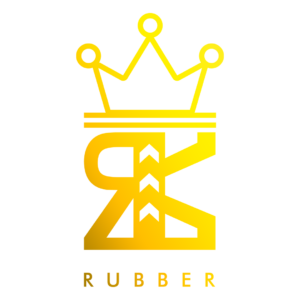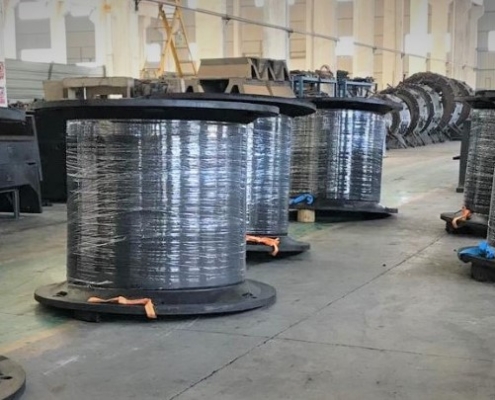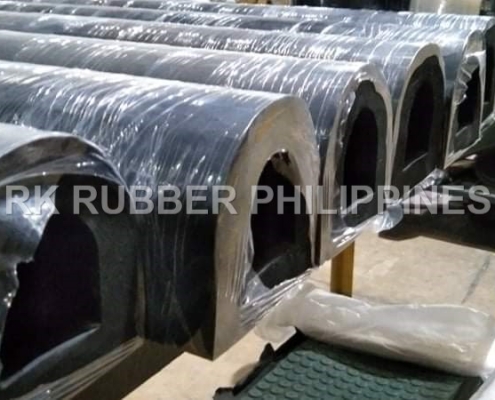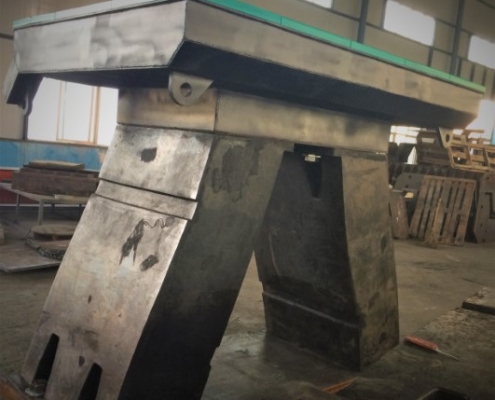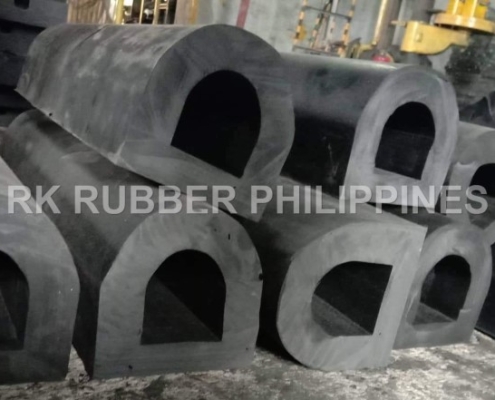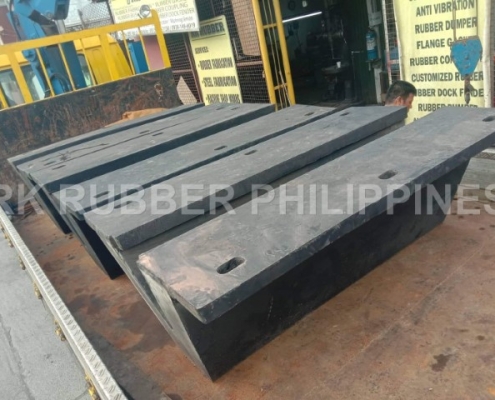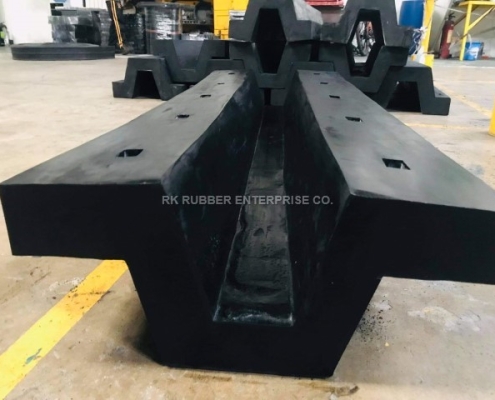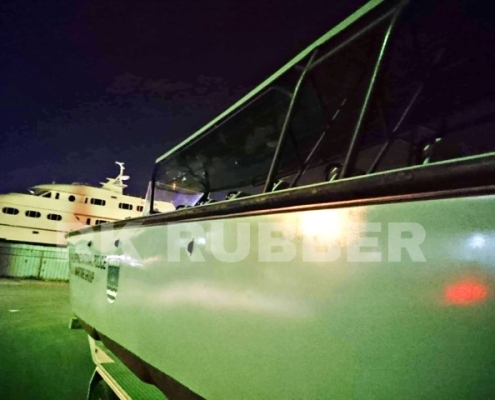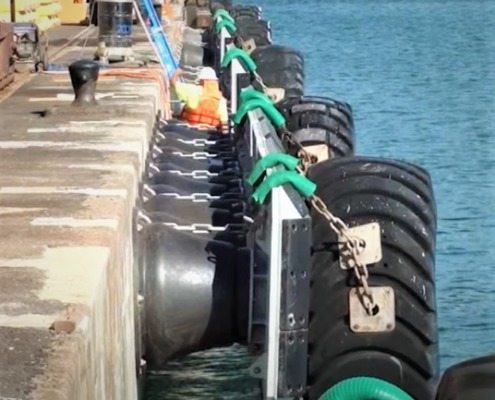Rubber Dock Fender
RK Rubber Enterprise Co. supplies and manufactures various high-quality rubber products, including rubber dock fender, which gives maximum protection to absorb shocks or prevent contact between the docks and vessels. It is a must for every industrial or commercial building with substantial dock activities to protect its property. It is widely used in the marine sector, preventing damaging parts, especially from docks and other vessels.
These are some factors we need to consider when choosing your fenders.
- Berthing system
- Ocean or Sea Currents
- Vessel size and shape
- Pier or Harbor structure
- Speed and condition of vessels
History
Rubber dock fenders were first invented in the early 1800s. In 1852, John Harkness patented an improved design for his “Dock Deflector,” later renamed the “Harkness-Sargent” fender. This invention allowed boats to enter and exit the harbor safely at all times of day and night. It also prevented ships from colliding with each other or the sides of the dock during high tide. By 1900, rubber dock fenders had become widespread throughout America’s ports. However, they did not catch on until World War II, when rubber became scarce because the military needed it. After the war ended, rubber prices dropped dramatically as demand increased again. The popularity of rubber dock fenders soared once more. Today there is a huge variety in sizes, shapes, colors, materials, designs, etc., but most are made out of rubber. Rubber dock fenders can be found anywhere along the waterfront; however, their use has declined somewhat since the 1950s due to changes in port construction practices and environmental concerns about pollution.
Types of Rubber Dock Fenders
Rubber dock fenders are a vital part of any dock or pier. There are two types of dock fenders, static and dynamic. A static dock fender is fixed in place and does not move. A dynamic dock fender moves with the waves to help absorb the impact of boats hitting the dock. Dock fenders are made of rubber to help absorb the impact of vessels. They can be found on piers and ports all over the world. The most common type of dock fender is called a “rubber” dock fender because it uses rubber as its primary material.
Installation
Installation of dock fenders may vary depending on the condition of the port and the structure of the ship. Ports with significant wave action or harsh weather conditions may require more aggressive fender protection than those in calmer areas. The type of ship being docked also affects the installation, as a vessel with a deep draft will require longer and heavier fenders than a vessel with a shallow draft. Dock fender installation is usually performed by one of two methods. The first method involves a crane to lift the dock fenders and place them in their final position. This tends to be the more expensive method due to hiring a crane. The second method involves a gangway, allowing workers to walk onboard the ship and install fenders.
Maintenance
Rubber dock fenders require minimal maintenance and can last for many years. However, they eventually wear out over time due to constant exposure to water and harsh weather conditions. If you notice any cracks in your dock fender, call us at (02) – 8897-6651 to help repair them before they become too large to be repaired.
These are the most common dock fender you might see in marine sectors.
Cell rubber dock fender is widely used in sea docks that offer long-lasting protection with a low reaction force that absorbs huge shock capacity. This dock fender has a cylindrical shape, which can be used from small to large vessels. It’s also the most versatile and durable rubber fender available in the market today, which can absorb a massive amount of energy or strength from all directions.
Features:
- Has a good shear force resistance
- Due to its panel construction; it is easy to install and maintenance
- Widely used on industrial applications due to its versatility
- Applications: Cruise and Cargo terminals, Navy/ Marine, Gas terminals
Cone rubber dock fender is a new type of bumper based on its predecessor (cell fender), which offers excellent shear strength, superior performance, and stability due to its conical shape. It can double its performance or energy absorption by simultaneously using two high-quality cone fenders.
Features:
- Outstanding energy absorption
- Has the most stable shear resistance;
- Can maintain its effectiveness up to 10° angle
- It has a suitable fender geometry, which doubled its performance among the other fenders.
Arch or V-Type has become popular in recent years due to its design, shape, and features. An arch dock fender is a type of marine fender typically used in applications where a large amount of water flow is present. This dock fender is easy to install, practical, and fits every port corner. It has a top-notch v-type design, which offers high stress and force absorption. This type of fender is preferably for small to medium vessels in most cases.
Features:
- Excellent shear, wear, and tear performance
- Proven shape, design, and functionality
- Ultra-durable that can last a lifetime and can stand in any weather conditions.
- Applications: Workboat, Cargo berths, Cruise or Roro Terminals
Unit Element dock fender is a versatile and high performer fender placed horizontally or vertically. It has a high wear resistance to maintain its durability and stability in absorbing shocks from large vessels.
Features:
- Outstanding shear and wear resistance
- Due to its modular design, it has unlimited settings for adjustments.
- Proven and tested built; It has also been used for decades worldwide.
D-Type rubber dock fender is an excellent performer that offers a superior strength in shock absorption that prevents damages. Usually, you will find this fender installed in vessels and small to medium jetties.
Features:
- Due to its lightweight, it is quick and easy to install
- Has excellent reaction energy and force absorption – depends on what and where to use
- Easy for maintenance
- Suitable for small up to huge vessels
This video tells us that having protection in your investment is essential.
Source: Youtube
Below are some of our actual products and applications.
